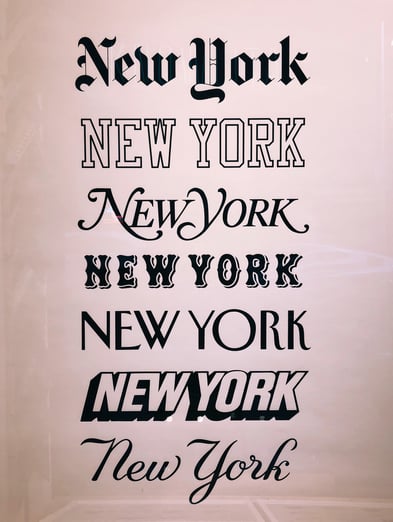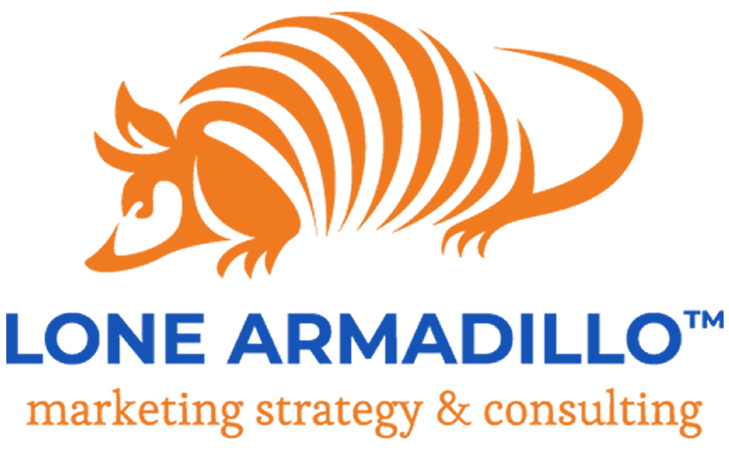A business’ brand is even more important in this age of constant marketing and advertising messages, let alone the additional competition of individuals promoting their personal brands as well. Amidst thousands of ads, images, emails, etc., what role does a brand play? And what exactly makes a good brand?
For the busy executive, here is what you need to think about when doing a rebranding or establishing an initial brand, and how to discuss it with your team.
USP and Value Proposition
Before launching into a logo, fonts and colors – things that one usually associates with a brand, it’s critical to start with what those elements will represent. These are the Value Proposition and the Unique Selling Point of your products or services. The Voice will help convey these elements in writing.
The Value Proposition is the unspoken promise of what will be the experience and benefit of working with or using your products or services. It conveys the relative price (luxury/ cheap), efficiency, quality, and service of your offerings as well as the impact on the customer’s ability to service its clients. The Value Proposition also communicates the perceived value others have when aware of which brands you use.
For example, the Apple brand conveys quality, a higher price point, good customer service, and for those using Apple products, they benefit from being seen as valuing these same aspects, and likely to practice them themselves. Or if a supplier uses brand name products versus discounted versions, it suggests a broader implication of quality standards.
It is incumbent upon the company to live up to the promises implied in the Value Proposition. This requires training and constant reinforcement through all levels of the organization.
Unique Selling Point is simply what you offer that your competitors don’t. What can only be said about your product or service. Note, it needs to have relevance to the purchaser. This USP will reflect your target audience’s buying journey – what matters to them. For example, if selling a high-end sports car, it is unlikely that one would have a USP used in their marketing campaigns about fuel efficiency – unless that was why this car was developed and the part of the market that you’re going after. Otherwise, it won’t resonate with the target audience and wastes the limited attention folks will give your brand.
Your USP needs to be memorable and conveyed in your tagline. This becomes (hopefully) the knee-jerk reaction people have when they hear of your brand. “Oh, they’re the ones who do X.” It helps people position you in the marketplace vis-a-vis your competitors. It can also help associate you with other brands offering a similar quality, cost or speed. This can include a produce from a major brand. Again, Apple is a good example, with the iPhone its own brand and related and benefiting from the Apple brand. Or perhaps brands that are sold at Starbucks or Costco; a certain expectation of quality is expected by association. The Unique Selling Point of each item, though, needs to stand on its own.
The Voice will be used in your text or “copy.” Is it formal or casual? Conversational? Informative? First or third person? A good copywriter will be able to customize the copy to consistently use this tone which helps to establish and reinforce the relationship you want people to have with your brand.
Similarly, there should be standard language for frequently used references, such as product descriptions. From an SEO (Search Engine Optimization) standpoint, this is really important. For your users and potential clients, this consistency helps people to internalize the value proposition and to remember it when they may need your product or service.
Logo, Fonts, Colors
The Logo is what most people think of first when one mentions a brand. It is a graphic image, usually with text with the brand name in a stylized font. Hopefully it is memorable and easily identifiable with your company’s products and services. As mentioned above, though, developing the logo follows from having a clear sense of purpose and position in the marketplace. It should be memorable, unique, and not overly complicated.
 Which Fonts are used in the logo, as well as for website, social media and printed materials, etc., also will convey the tone of the brand. Curvy letters can imply whimsy and creativity, block letters suggest more stability and consistency. Most companies have a mix of serif (with the small lines at the end of each letter) and sans serif (without those lines). Spacing of characters, whether the fonts include bold, italics, and semi-bolds can limit or expand options for use. People should get used to seeing the same fonts used consistently across mediums and channels for a brand, rather than changing for each social media post or presentation deck.
Which Fonts are used in the logo, as well as for website, social media and printed materials, etc., also will convey the tone of the brand. Curvy letters can imply whimsy and creativity, block letters suggest more stability and consistency. Most companies have a mix of serif (with the small lines at the end of each letter) and sans serif (without those lines). Spacing of characters, whether the fonts include bold, italics, and semi-bolds can limit or expand options for use. People should get used to seeing the same fonts used consistently across mediums and channels for a brand, rather than changing for each social media post or presentation deck.
Colors have a psychological influence which, like fonts, can suggest stability (e.g., a dark blue used by many large corporations) or something new and different (e.g., at the time, the lighter blue of Twitter). Gradients are not a good idea of a logo – they are hard to reproduce, especially in black and white or in 1 color. They are also challenging because it suggests indecision and people desire a clear sense of what a brand stands for.
When developing the logo design, be sure to account for horizontal and “stacked” versions, how it will work as a square icon (think apps on a phone), full color (four color), 1 color, black and white, and “knockout” or white on a colored background.
Imagery and What it Communicates
The style of a photo conveys much more than you probably considered. Committing to a style, especially on the same web page, sell sheet or presentation deck creates a better user experience and reinforces the value proposition. Ideally, a company or brand will stick with one style for all of its messaging, but at a minimum, for one genre, one style should be employed.
At a high level, these styles can be approached as:
- Blur or sharp focus
- Eye level, looking up or looking down - Looking at the camera or in a scene
- One person or more than one or no people
- Representative or realistic
- Photo or graphic drawing (which has its own range of styles).
Action Steps
A brand is a shortcut for someone to know what your company stands for and what the experience of using your product or service will be. Just as you want your team to deliver consistent quality, you need to communicate that by consistently using the determined colors, fonts, image style and voice in your copy.
Spending the time to research, brainstorm and craft a value proposition will pay off repeatedly throughout every sales and service conversation. By having a clearly defined brand which communicates and represents what you stand for and the benefit to the client, you will save money and gain - and retain - quality clients and employees.



